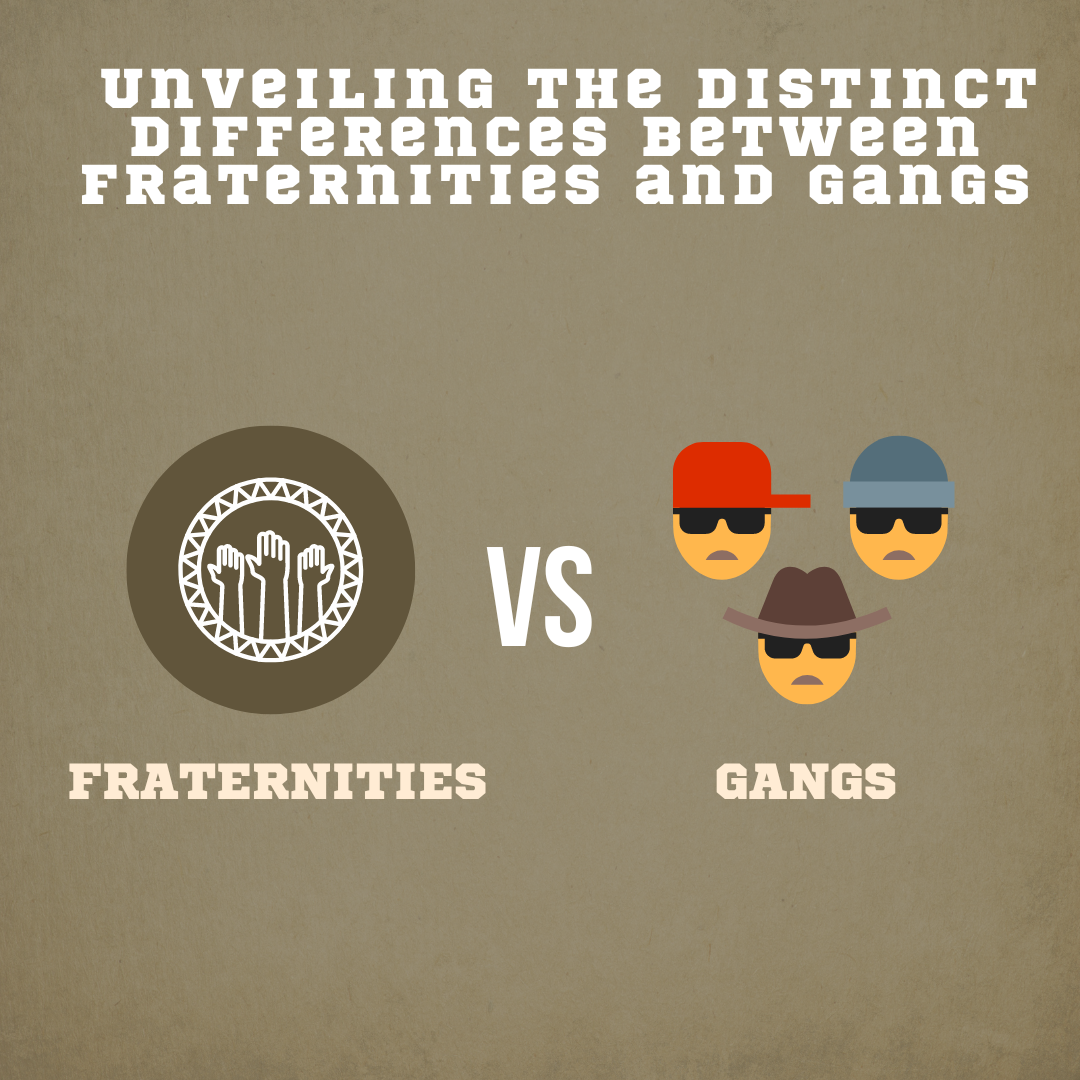
Brotherhood Beyond Boundaries: Unveiling the Distinct Differences Between Fraternities and Gangs
In the realm of close-knit groups, the terms "fraternity" and "gang" might seem similar due to their associations with camaraderie and belonging. However, a closer look reveals that these two groups have vastly different purposes, cultures, and impacts on society. In this blog post, we'll delve into the distinctive characteristics that set fraternities and gangs apart, shedding light on their individual roles in shaping the lives of their members and their communities
-
Purpose and Foundation:

At their core, fraternities and gangs are founded on vastly different principles. Fraternities are established with the intention of fostering academic growth, personal development, leadership skills, and community service among their members. They often have deep-rooted traditions and values that contribute positively to their members' lives and the larger community.
Gangs, on the other hand, typically form around a shared affiliation with criminal activity. They may engage in illegal activities, violence, and other harmful behaviors that pose a threat to society. Gangs often lack the positive values and aspirations that fraternities seek to instill in their members.
-
Values and Goals:

Fraternities place a strong emphasis on academic achievement, personal growth, and community involvement. Many fraternities have philanthropic initiatives that aim to give back to their communities through volunteer work and fundraising efforts. The values upheld by fraternities revolve around education, character development, and social responsibility.
Gangs, unfortunately, often operate with values that revolve around power, control, and criminal enterprises. Their goals may include territorial dominance, illegal drug distribution, and other harmful activities that can negatively impact the communities they operate in.
-
Community Impact:

Fraternities are known for their positive contributions to their communities. They organize charity events, volunteer programs, and educational initiatives that make a meaningful difference in the lives of others. Through these actions, fraternities help build stronger and more interconnected communities.
Gangs, on the other hand, can have a detrimental impact on communities. Their criminal activities can lead to violence, fear, and an overall decline in the quality of life for residents. The presence of gangs can destabilize neighborhoods and hinder social progress.
-
Membership and Influence:

Fraternities maintain a formal membership process that often includes recruitment, initiation rituals, and a commitment to the organization's values. Membership in a fraternity is a positive endeavor that encourages personal growth, leadership development, and lasting friendships.
Gangs typically involve a more informal and often coercive membership process. Individuals may be forced or pressured to join, often leading to a cycle of criminal behavior and limited opportunities for personal development.
Conclusion:
While fraternities and gangs might both embody the concept of close-knit groups, their intentions, values, and impacts on society are profoundly different. Fraternities strive to uplift their members and communities through education, service, and personal growth, fostering a sense of responsibility and leadership. In contrast, gangs perpetuate negative cycles of criminality, violence, and instability, ultimately harming the individuals involved and the communities they affect. Recognizing these differences is essential for understanding the role each group plays in shaping the lives of their members and the broader society.
Like this blog post? You can read other awesome blog posts here such as Selecting The Ideal Fraternity
